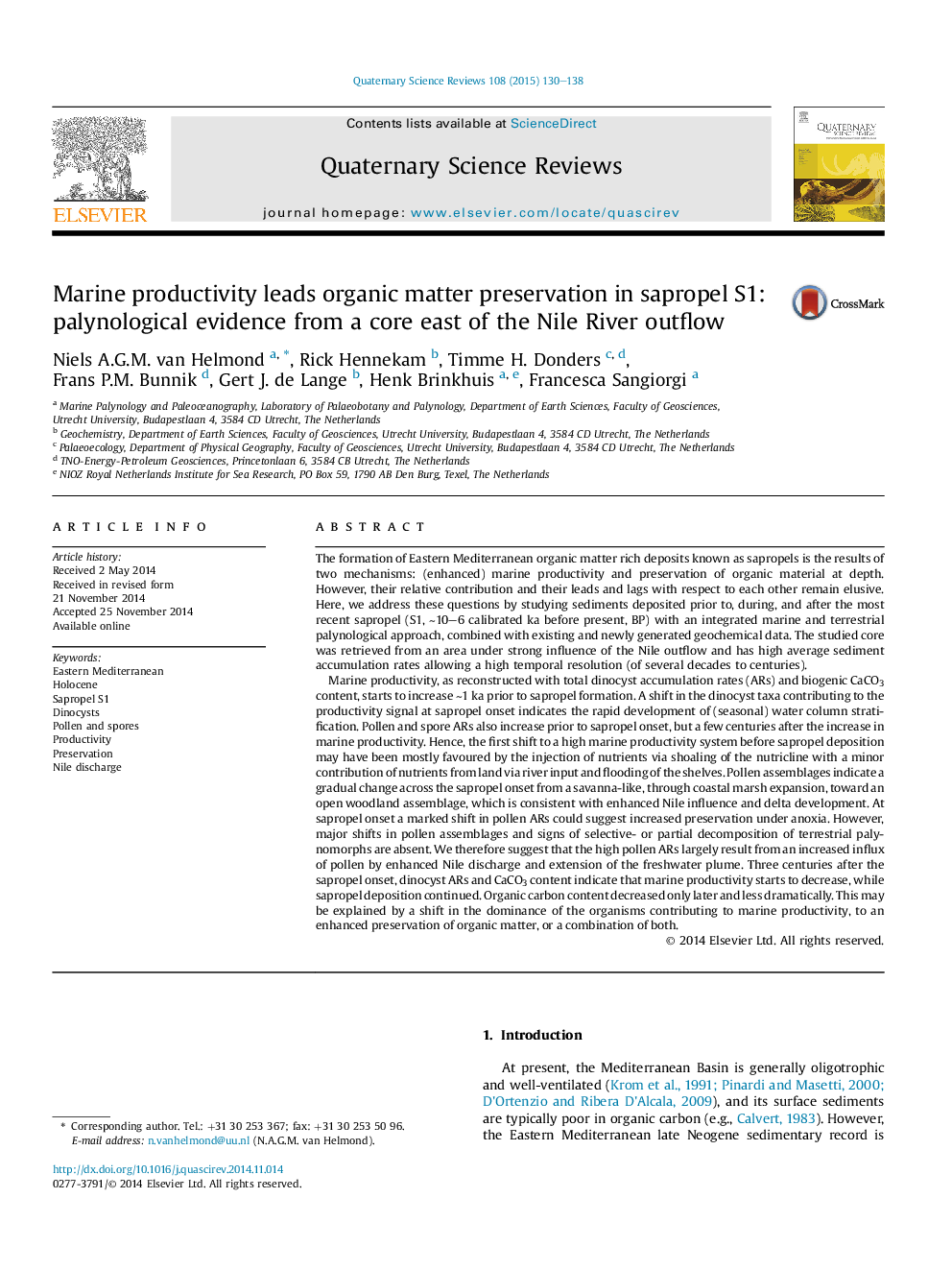| کد مقاله | کد نشریه | سال انتشار | مقاله انگلیسی | نسخه تمام متن |
|---|---|---|---|---|
| 6446536 | 1640826 | 2015 | 9 صفحه PDF | دانلود رایگان |
عنوان انگلیسی مقاله ISI
Marine productivity leads organic matter preservation in sapropel S1: palynological evidence from a core east of the Nile River outflow
دانلود مقاله + سفارش ترجمه
دانلود مقاله ISI انگلیسی
رایگان برای ایرانیان
کلمات کلیدی
موضوعات مرتبط
مهندسی و علوم پایه
علوم زمین و سیارات
زمین شناسی
پیش نمایش صفحه اول مقاله

چکیده انگلیسی
Marine productivity, as reconstructed with total dinocyst accumulation rates (ARs) and biogenic CaCO3 content, starts to increase â¼1Â ka prior to sapropel formation. A shift in the dinocyst taxa contributing to the productivity signal at sapropel onset indicates the rapid development of (seasonal) water column stratification. Pollen and spore ARs also increase prior to sapropel onset, but a few centuries after the increase in marine productivity. Hence, the first shift to a high marine productivity system before sapropel deposition may have been mostly favoured by the injection of nutrients via shoaling of the nutricline with a minor contribution of nutrients from land via river input and flooding of the shelves. Pollen assemblages indicate a gradual change across the sapropel onset from a savanna-like, through coastal marsh expansion, toward an open woodland assemblage, which is consistent with enhanced Nile influence and delta development. At sapropel onset a marked shift in pollen ARs could suggest increased preservation under anoxia. However, major shifts in pollen assemblages and signs of selective- or partial decomposition of terrestrial palynomorphs are absent. We therefore suggest that the high pollen ARs largely result from an increased influx of pollen by enhanced Nile discharge and extension of the freshwater plume. Three centuries after the sapropel onset, dinocyst ARs and CaCO3 content indicate that marine productivity starts to decrease, while sapropel deposition continued. Organic carbon content decreased only later and less dramatically. This may be explained by a shift in the dominance of the organisms contributing to marine productivity, to an enhanced preservation of organic matter, or a combination of both.
ناشر
Database: Elsevier - ScienceDirect (ساینس دایرکت)
Journal: Quaternary Science Reviews - Volume 108, 15 January 2015, Pages 130-138
Journal: Quaternary Science Reviews - Volume 108, 15 January 2015, Pages 130-138
نویسندگان
Niels A.G.M. van Helmond, Rick Hennekam, Timme H. Donders, Frans P.M. Bunnik, Gert J. de Lange, Henk Brinkhuis, Francesca Sangiorgi,